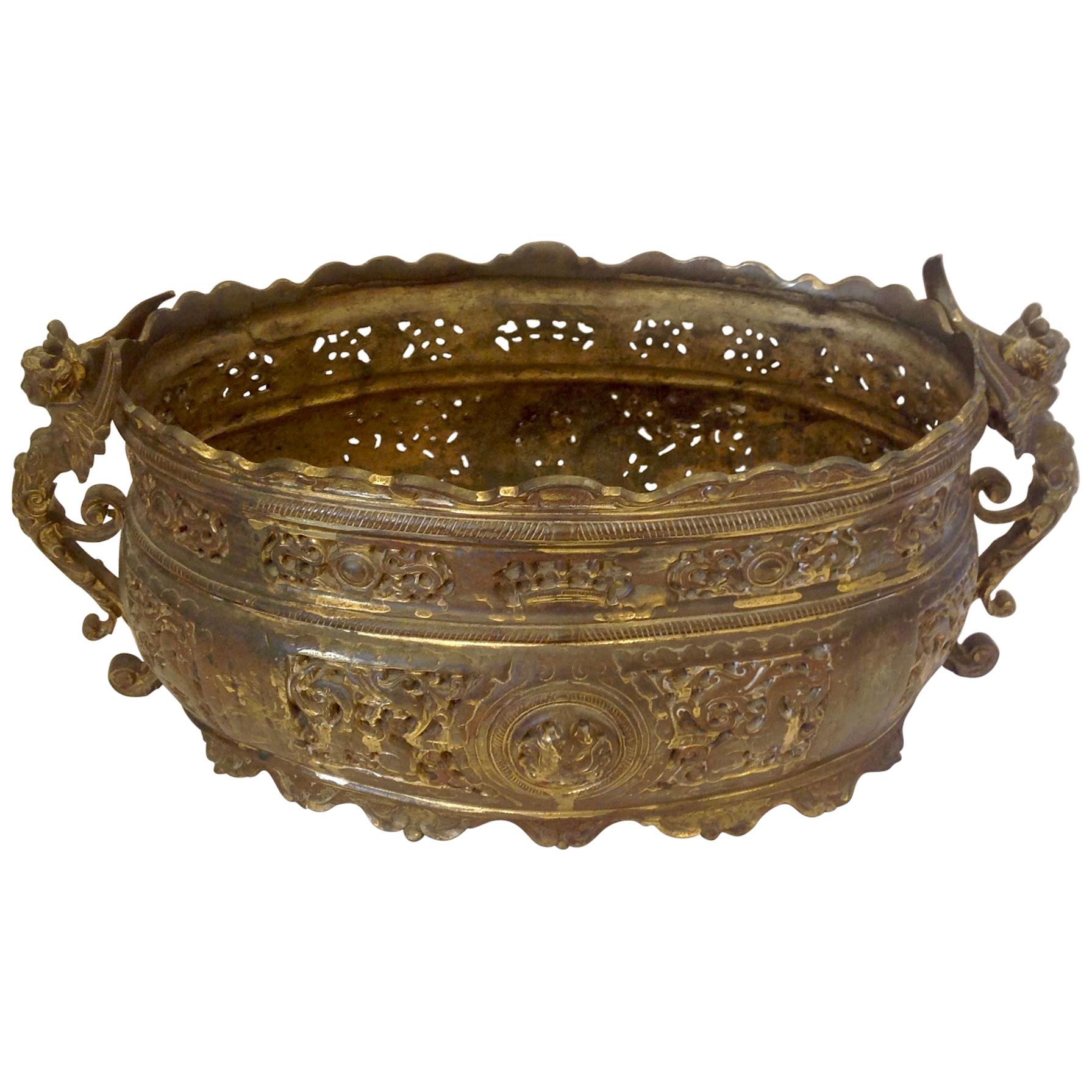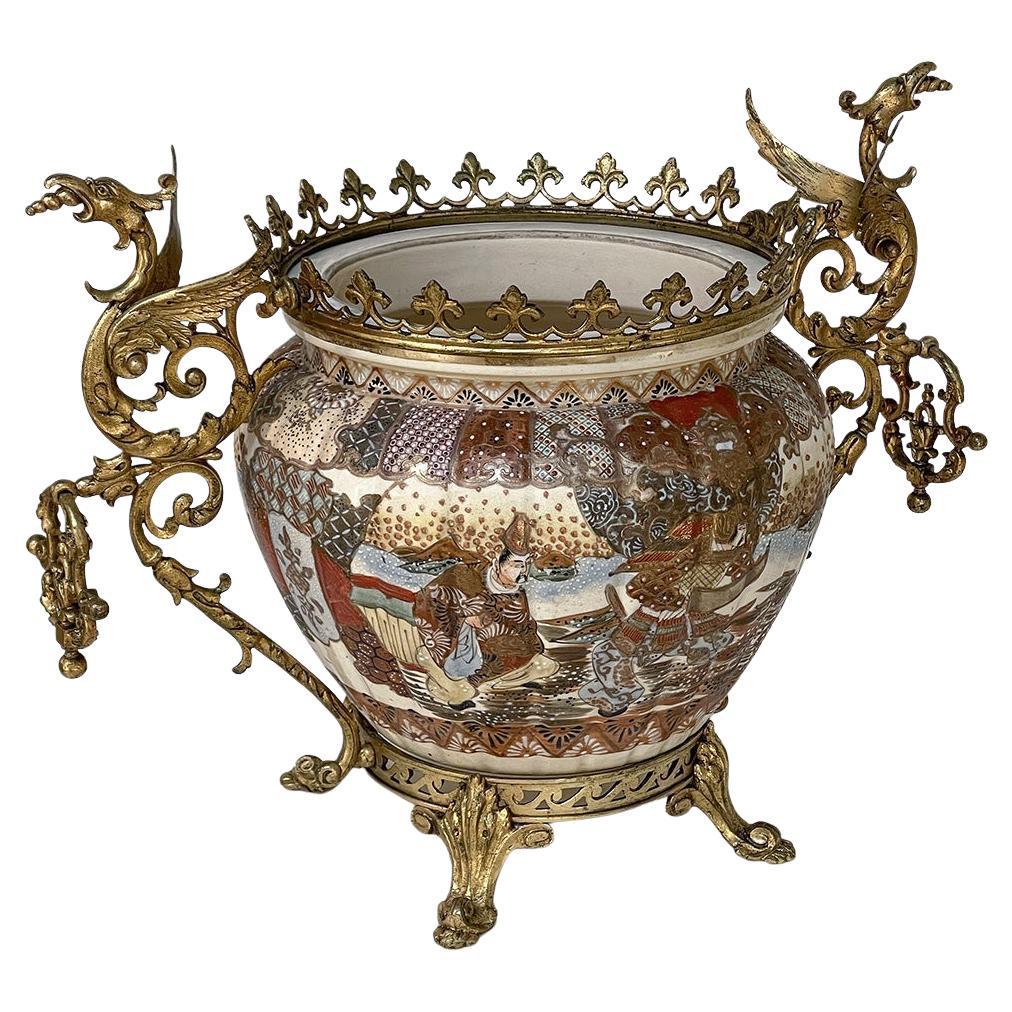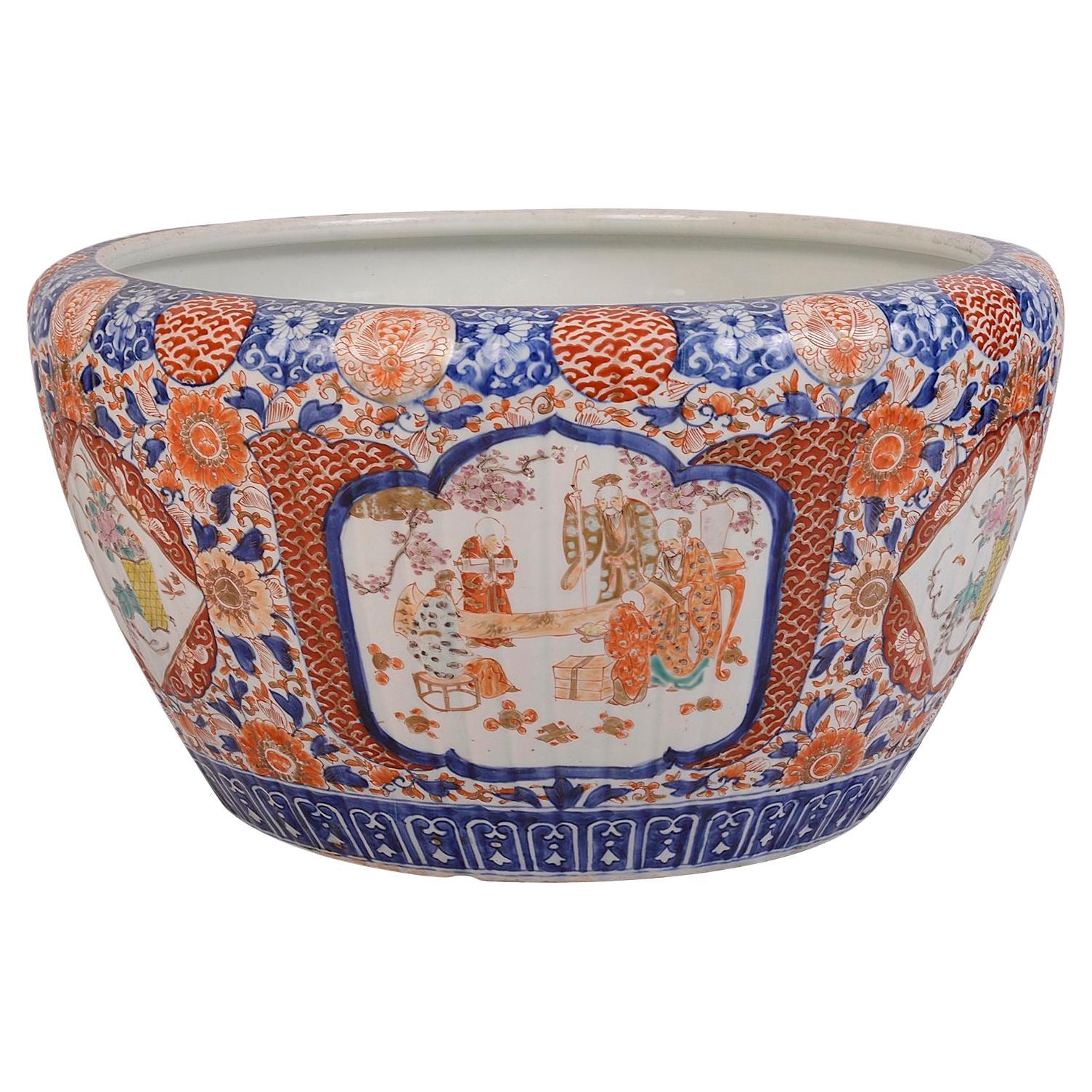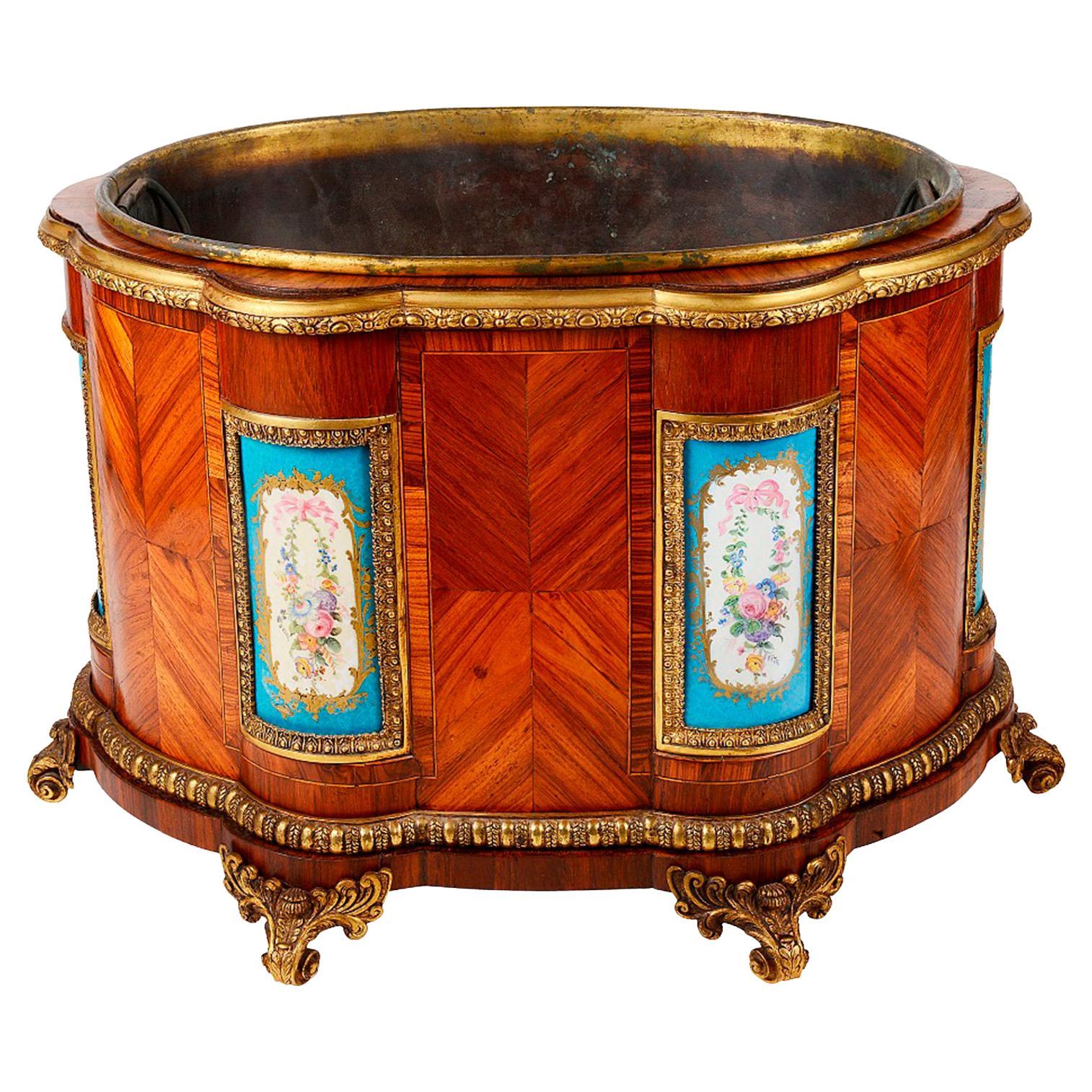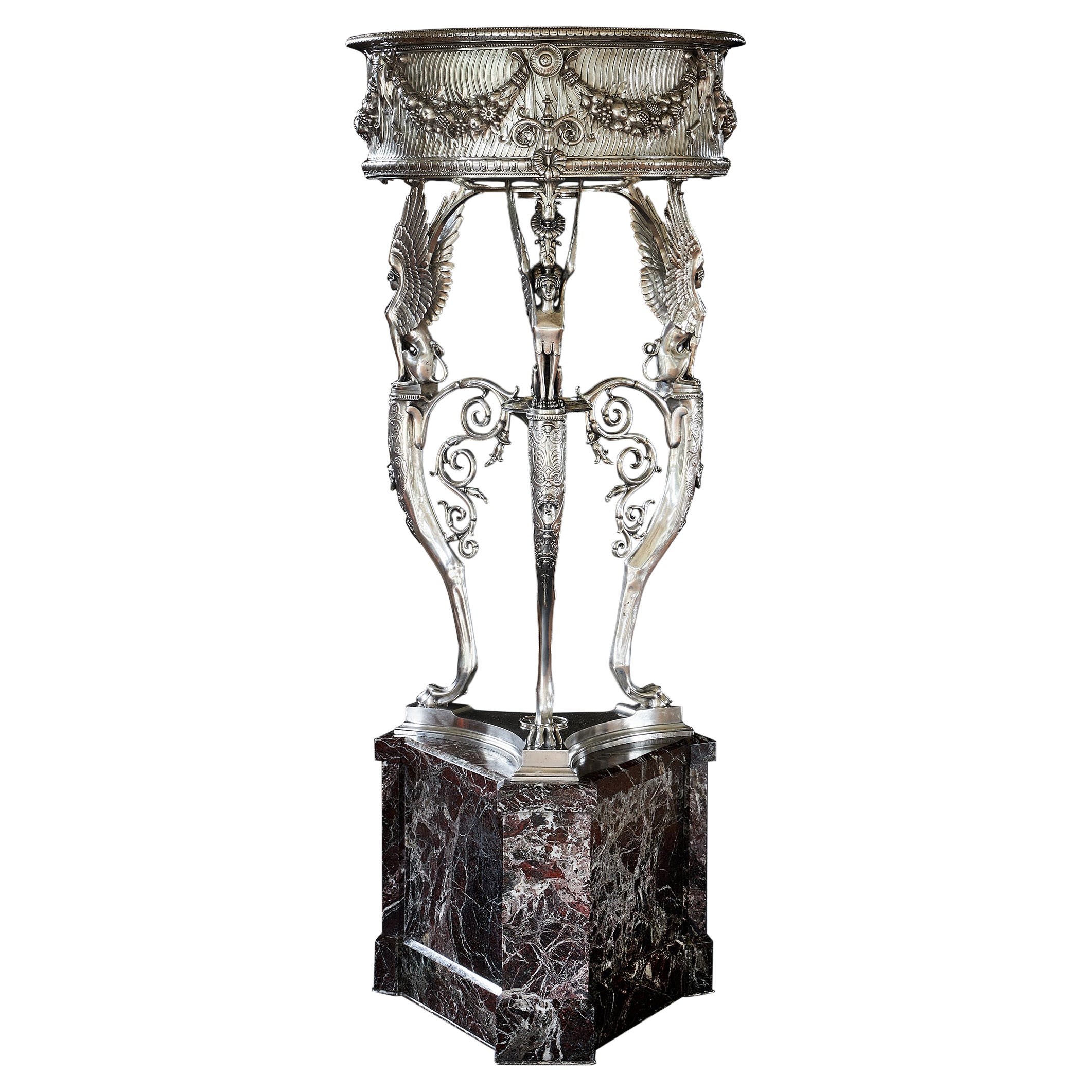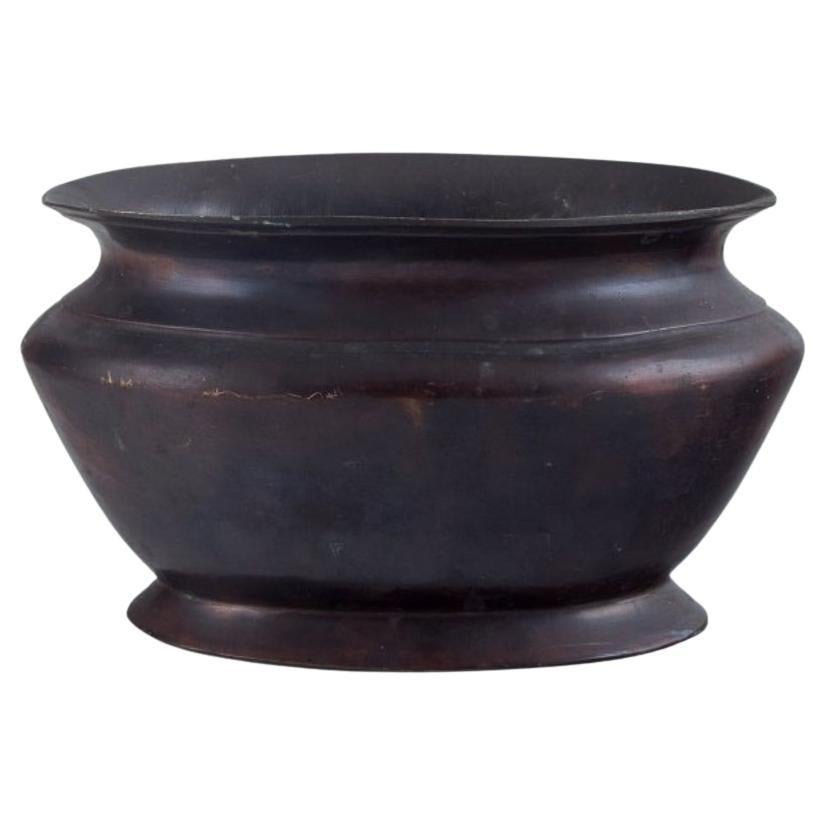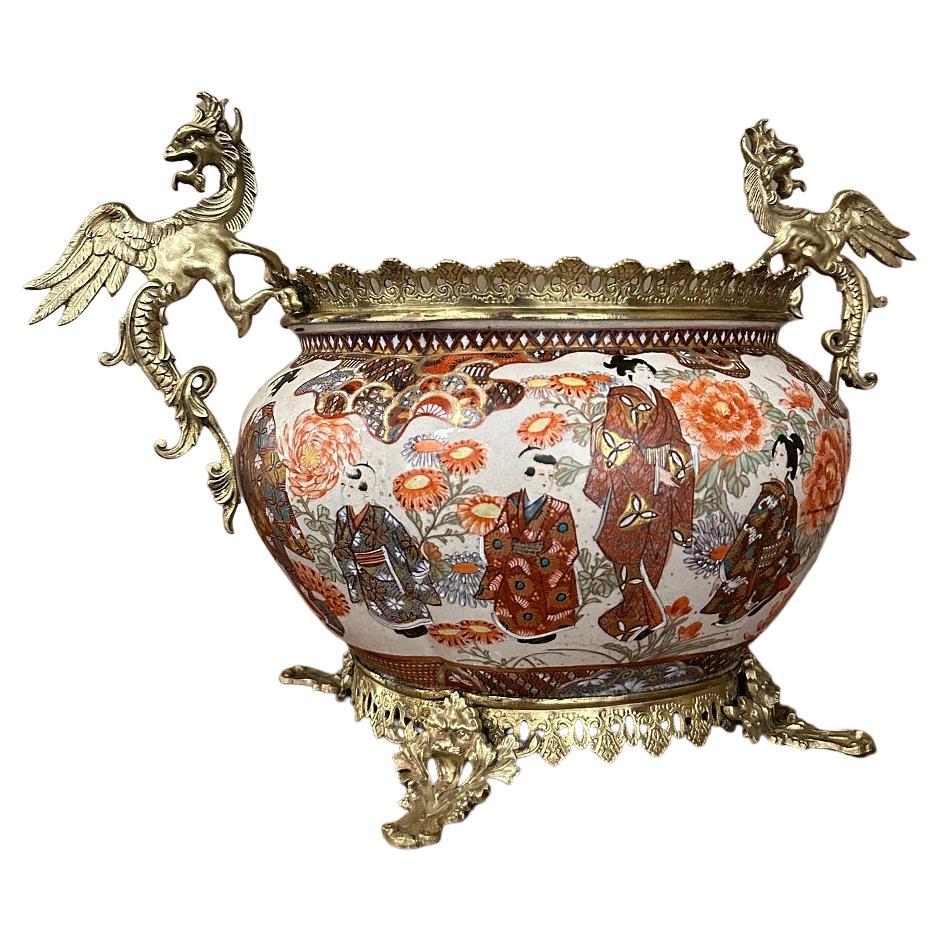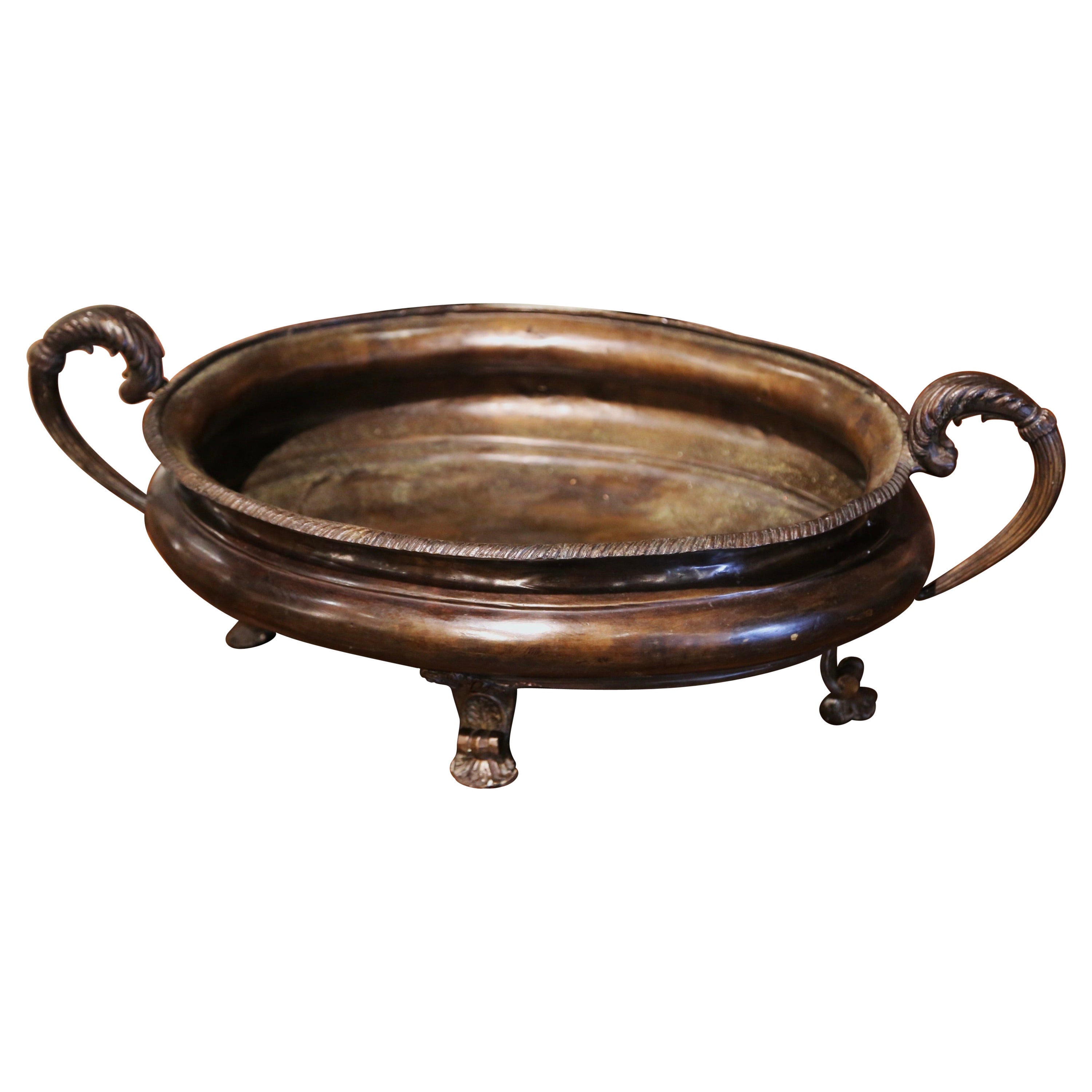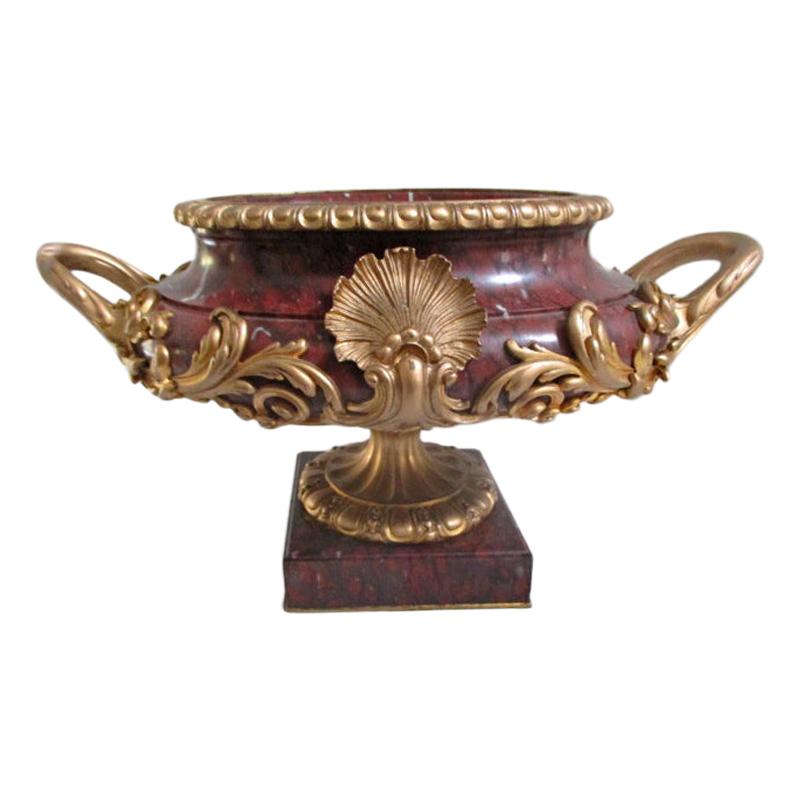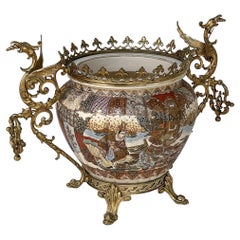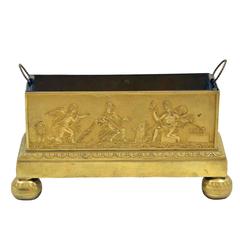
19th Century Bronze Jardinière
View Similar Items
1 of 1
19th Century Bronze Jardinière
About the Item
- Dimensions:Height: 5.5 in (13.97 cm)Width: 11.5 in (29.21 cm)Depth: 4.5 in (11.43 cm)
- Materials and Techniques:
- Place of Origin:
- Period:
- Date of Manufacture:circa 1870
- Condition:Wear consistent with age and use.
- Seller Location:New York, NY
- Reference Number:1stDibs: LU225735662733
You May Also LikeView All
- 19th Century Bronze Jardinière / Center PieceLocated in West Palm Beach, FLAn elaborate continental planter is superbly fashioned with exterior pierced sides. It is appointed with dramatic caryatid handles.Category
Antique Mid-19th Century European Planters, Cachepots and Jardinières
MaterialsBronze
- 19th Century Bronze Mounted Satsuma JardiniereLocated in Dallas, TX19th Century bronze mounted satsuma jardiniere is a splendidly preserved artifact from a wonderful period in French history! The porcelain bowls wer...Category
Antique 1880s French Meiji Planters, Cachepots and Jardinières
MaterialsBronze
$3,024 Sale Price20% Off - 19th Century Copper & Brass JardiniereLocated in Dallas, TX19th Century copper & brass Jardiniere features a unique boat-shaped form with pierced gallery rail all around the top rim. The rail and base are in brass, with copper in between. Cast bronze lions...Category
Antique 1870s French Napoleon III Planters, Cachepots and Jardinières
MaterialsBrass, Bronze, Copper
$716 Sale Price20% Off - 19th Century Japanese Imari jardiniere.Located in Brighton, SussexA good quality late 19th Century Japanese Imari jardiniere, having wonderful bold classical blue and orange Imari colours depicting motif and floral board...Category
Antique Late 19th Century Japanese Planters, Cachepots and Jardinières
MaterialsPorcelain
- 19th Century French Table JardiniereLocated in Brighton, SussexA good quality 19th Century French oval Kingwood veneered table jardiniere, having gilded ormolu mounts, mouldings and scrolling feet. Sevres style porcelain plaques each with hand p...Category
Antique Late 19th Century French Louis XVI Planters, Cachepots and Jardi...
MaterialsPorcelain, Mahogany
- 19th Century Silvered Bronze Athénienne Jardinière by Ferdinand BarbedienneBy Ferdinand BarbedienneLocated in Oxfordshire, United KingdomA French silvered-bronze athénienne by Ferdinand Barbedienne, Paris, last quarter 19th century with a revolving liner, the frieze applied with bucrania suspending ribbon-tied berried laurel swags above a border of bellflowers on a stippled ground above three seated female sphinxes issuing stylised foliage and scrolls on lion monopodia cast with the mask of Hercules, scrolling foliage and anthemions joined by stretchers, raised on a concave-sided triform marble base on a further thin silvered-bronze base, inscribed to the tripod base 'F. BARBEDIENNE' Measures: 103.3cm. high, 41.5cm. diameter; 3ft. 4 3/8 in, 1ft. 4 1/4. This impressive athénienne is a key reminder of the longevity of a particular model and design’s success from Antiquity through to the 19th century and up until this day. Typically known as the ‘Trépied du Temple d’Isis’, this athénienne is designed after the Roman antique originally found at Pompeii and now at the Museo Archeologico Nazionale, Naples (fig.1). From being for example an inspiration for the baptismal font of Napoléon’s son in 1811, this model was the inspiration to many highly skilled makers throughout the 19thcentury such as the Manfredini brothers from Milan and of course the Parisian well-established bronze founder Ferdinand Barbedienne who executed the present example. The Temple of Isis was a Roman temple dedicated to the Egyptian goddess Isis and was among one of the first discoveries during the excavation of Pompeii in 1764. Certainly considered as one of the most elegant examples of antique tripods, the existence of this model was then popularized to the rest of Europe via prints, one of the first being by Giovanni Battista Piranesi in 1779. This type of tripod was also popularised by an engraving in C. Percier and P. Fontaine’s, Receuil de Décorations Intérieures of 1801. Interestingly, there is also a watercolour now in the Musée Carnavalet, Paris, showing this type of tripod displayed at the 1801 Exposition des Produits de L’Industrie in the Louvre. The passion for Greek and Roman Art in the 19th century. The discovery of Pompeii and Herculaneum around the middle of the 18th century gave rise to a new passion for Antiquity and the excavated masterpieces renewed the repertoire of fine and decorative arts and served as models for Neoclassicism. Members of the aristocracy as well as connoisseurs, particularly in England, completed their education by undertaking a ‘Grand Tour’ of Italy and often fell victim to the recently unearthed Greek and Roman artefacts...Category
Antique 19th Century French Grand Tour Planters, Cachepots and Jardinières
MaterialsMarble, Silver Plate, Bronze
